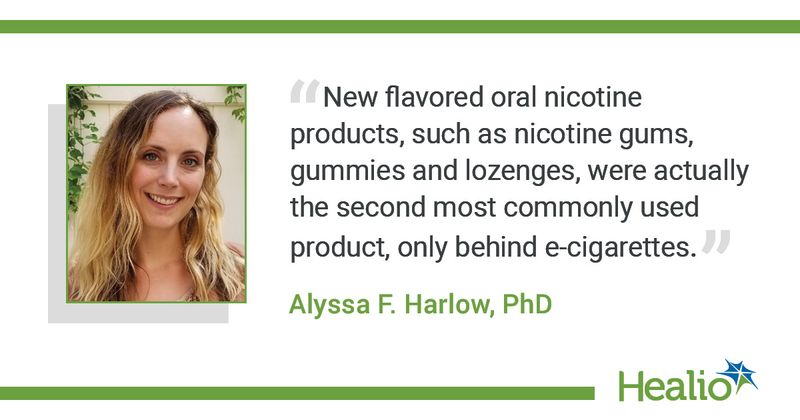Oral nicotine products gaining popularity among teens
Tobacco-free oral nicotine products are gaining popularity among adolescents, placing just behind e-cigarettes as the second most prevalent nicotine product, according to a study published in Pediatrics.
The report follows years of nicotine use conversations in adolescents being dominated by e-cigarettes.

Co-author Alyssa F. Harlow, PhD, a postdoctoral scholar in the department of population and public health sciences at the University of Southern California Keck School of Medicine, told Healio that the study was inspired by increases in the sale and marketing of new flavored oral nicotine products in the United States
“These products are advertised as being ‘tobacco free,’ and include nicotine chewing gums, lozenges, gummies, and nicotine pouches,” Harlow said. “We were interested in seeing whether youth are using these flavored oral nicotine products because they have attributes that could potentially appeal to teens.”
Harlow and colleagues surveyed 3,516 students in 9th and 10th grades from seven school districts in Southern California during the fall semester of the 2021-2022 school year. Among the surveyed students, 9.6% had ever used e-cigarettes, including 5.5% who had used them in the last 6 months, and 3.4% had ever used nontobacco oral nicotine products, with 1.7% noting they had used them in the last 6 months.
“We were a little surprised to find that new flavored oral nicotine products, such as nicotine gums, gummies and lozenges, were actually the second most commonly used product, only behind e‐cigarettes,” Harlow said. “On the one hand, we were surprised because these products are so new to market. However, on the other hand, nicotine gums, lozenges, and gummies do have several features that could appeal to young people. They tend to resemble candy and come in sweet flavors, and brands have engaged in widespread online media campaigns.”
The researchers also examined whether “certain groups of teens were at elevated risk” for using such products, according to Harlow. Ultimately, they found that students who were Hispanic, identified as female or a gender-minority identity or a sexual minority identity were more likely to report using nontobacco nicotine products.
Harlow and co-authors suggested that the products should be tracked in youth national surveillance surveys, to better inform national policies.
“The findings are concerning because these products often contain high nicotine content, which we know can be harmful for youth development,” Harlow said. “However, at this point we don’t yet know what the public health implications are and an important next step will be continued surveillance at the national level.”
